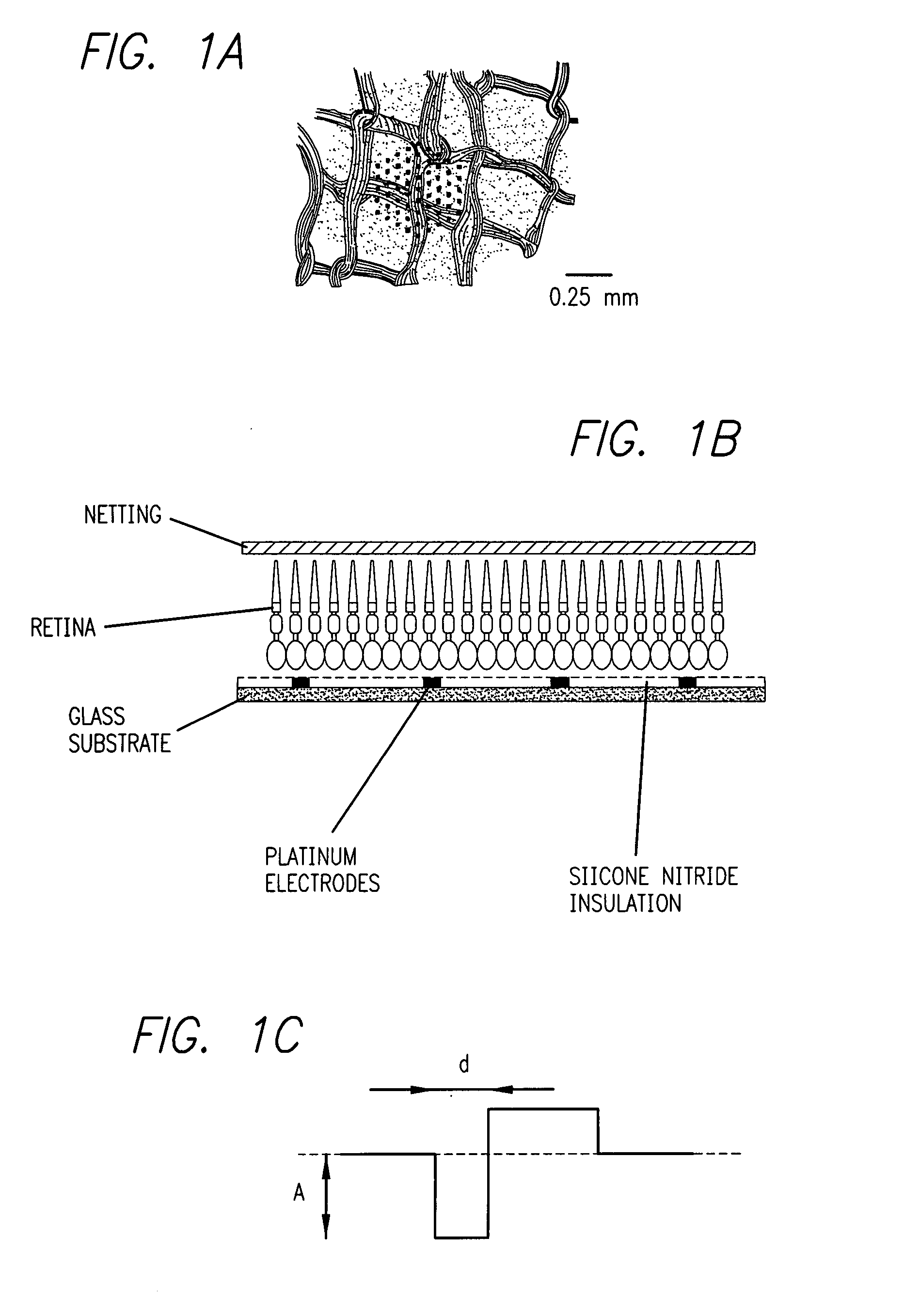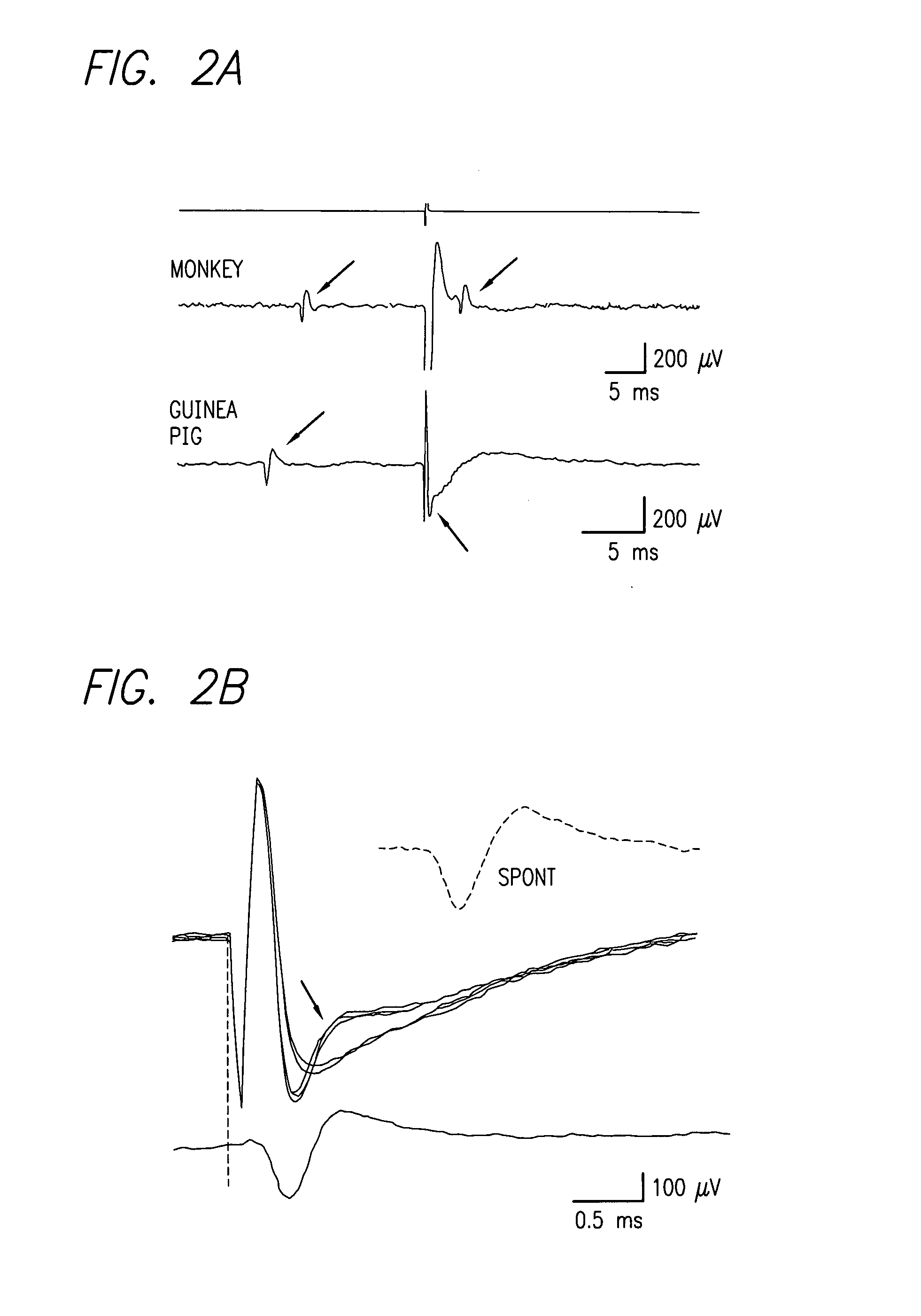Method and apparatus for visual neural stimulation
a neural stimulation and visual technology, applied in electrotherapy, therapy, etc., can solve the problems of increasing density and charge density, large prosthetic devices, and insufficient simulated vision to truly assist the visually impaired, and achieves high temporal and spatial precision, increase the spatial resolution of artificial sigh
- Summary
- Abstract
- Description
- Claims
- Application Information
AI Technical Summary
Problems solved by technology
Method used
Image
Examples
Embodiment Construction
[0036] The following description is of the best mode presently contemplated for carrying out the invention. This description is not to be taken in a limiting sense, but is made merely for the purpose of describing the general principles of the invention. The scope of the invention should be determined with reference to the claims.
[0037] Recent attempts to restore vision in the blind have met with extraordinary success. Electrical stimulation of retinas in people with neurodegenerative diseases has demonstrated the potential for direct excitation of neurons as a means of re-establishing sight. Long-term retinal implants in several profoundly blind people were shown to produce perceptions of light and allowed for the detection of motion and discrimination of very simple shapes (Humayun 2003; Humayun et al. 2003). Such achievement brings hope to the millions of people worldwide who suffer from photoreceptor loss due to advanced retinitis pigmentosa or age-related macular degeneration ...
PUM
| Property | Measurement | Unit |
|---|---|---|
| size | aaaaa | aaaaa |
| size | aaaaa | aaaaa |
| current | aaaaa | aaaaa |
Abstract
Description
Claims
Application Information
 Login to View More
Login to View More - R&D
- Intellectual Property
- Life Sciences
- Materials
- Tech Scout
- Unparalleled Data Quality
- Higher Quality Content
- 60% Fewer Hallucinations
Browse by: Latest US Patents, China's latest patents, Technical Efficacy Thesaurus, Application Domain, Technology Topic, Popular Technical Reports.
© 2025 PatSnap. All rights reserved.Legal|Privacy policy|Modern Slavery Act Transparency Statement|Sitemap|About US| Contact US: help@patsnap.com



